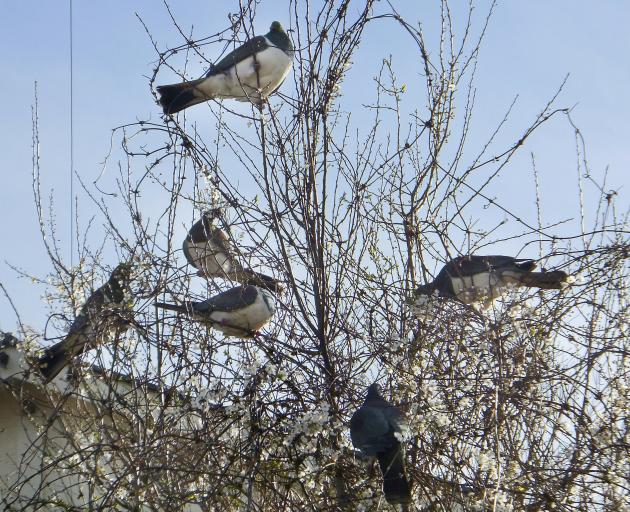
They are the instantly recognisable signature of a kereru — a New Zealand wood pigeon — and Otago and Southland residents are being asked to start counting them from today until September 27.
Victoria University of Wellington Centre for Biodiversity and Restoration Ecology director Stephen Hartley said the annual Great Kereru Count was about New Zealanders working together to gain a better understanding of kereru so scientists could help them thrive.
"Whether you see any kereru or not, sharing observations is helping us get a great picture of where kereru live, how many kereru there are or are not, and most importantly how best to protect them."
As well as being "real characters of the bush", kereru were also known as the gardeners of the sky because they helped spread precious seeds of forest giants such as tawa, miro and hinau, he said.
"Native forest is important for our health and wellbeing, and for ecosystem services such as clean water, clean air, and healthy soil."
Great Kereru Count co-ordinator Tony Stoddard said last year’s count found kereru were less abundant in many parts of New Zealand.
He said it may have been because there was an especially large amount of fruit and food in their winter feeding grounds deep within forests last year.
"So people just didn’t see them as much in gardens and around town.”
Some of the questions which may be answered this year are whether numbers in urban areas had increased again, whether last year’s plentiful forest food meant a corresponding bumper year for breeding, or if predators were preventing the kereru population from booming.
At this time of the year, kereru should be flocking to trees like willow and tree lucerne, he said.
"These trees are kereru magnets as the birds come out of their winter feeding grounds and prepare for the breeding season by feeding on the nitrogen-rich leaves.
“In urban areas, kowhai are another important food source for kereru, and you will often see or hear angry tui defending their trees from hungry kereru.”
He said rural residents could come across flocks as large as 100 in a paddock, free ranging on grass and clover.
The Great Kereru Count is supported by the Dunedin City Council and City Sanctuary Predator Free Dunedin.












